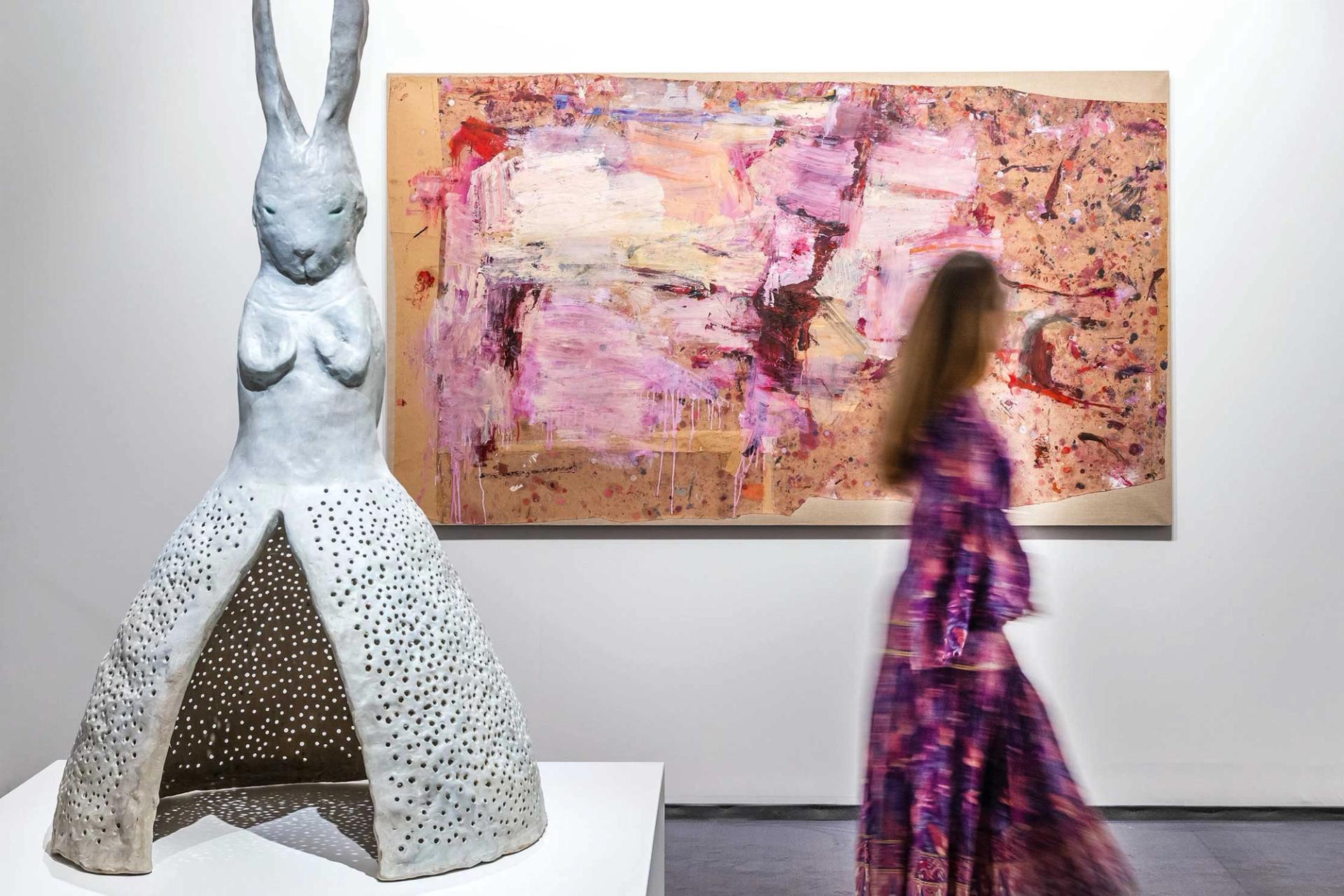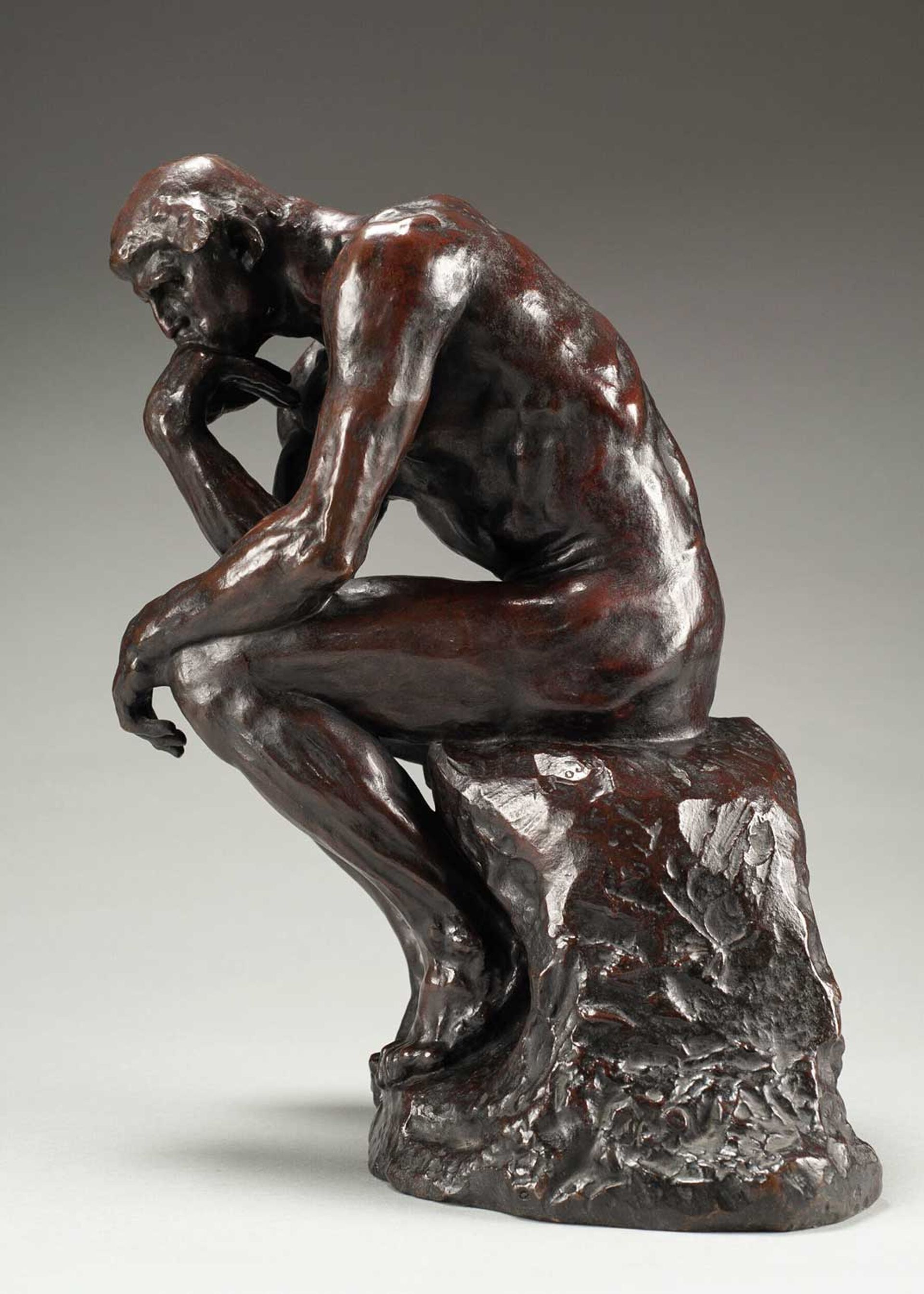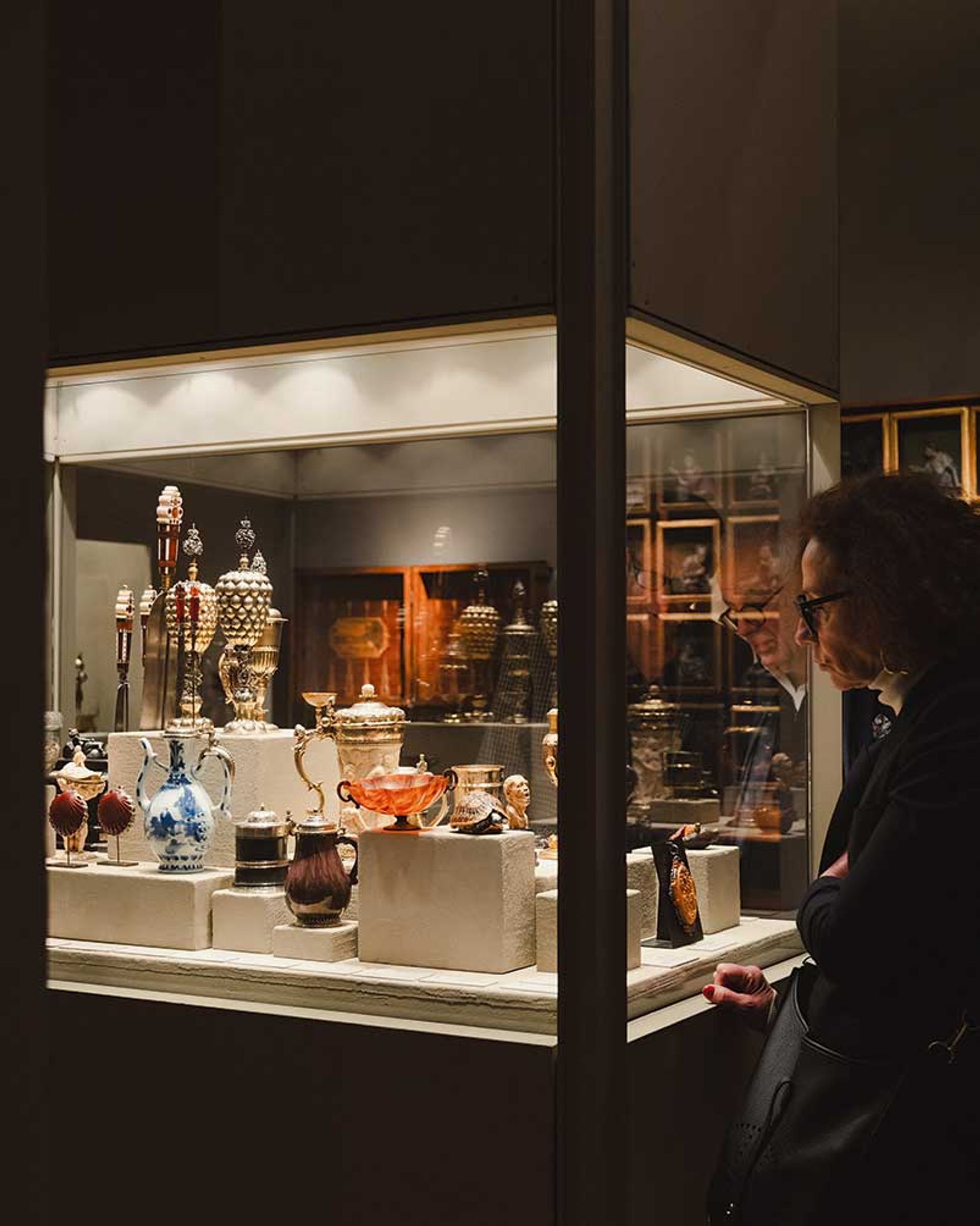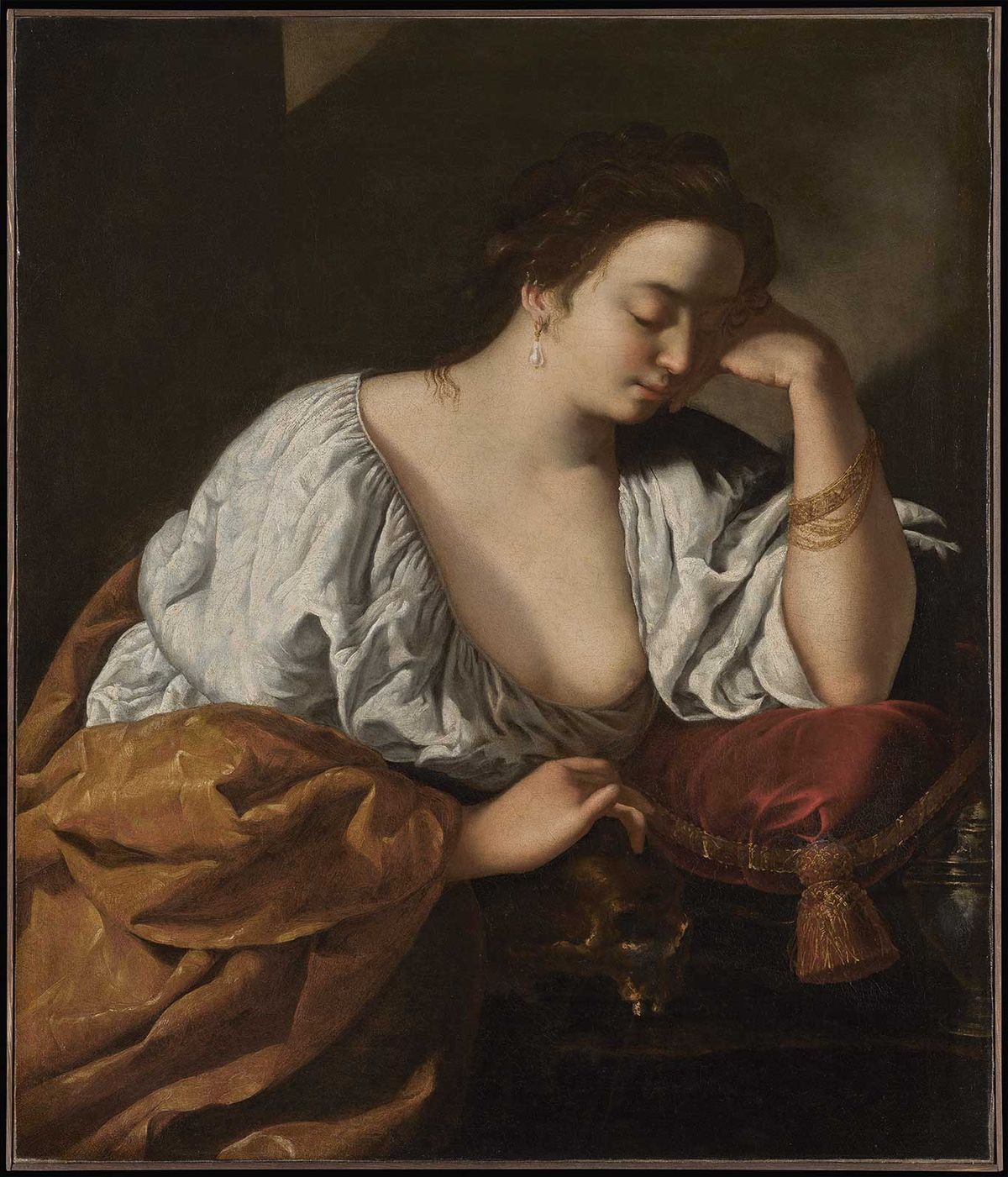Tefaf Maastricht is the venerable outlier of today’s art trade. The Dutch event, whose 37th edition opens to VIPs on 7 March, is now the only international fair left with a main focus on pre-20th century art, objects and furniture. And at a time when most other fairs (including Tefaf’s own spin-off in New York) follow the money by setting up shop in cities with enormous concentrations of new wealth, Tefaf’s mother ship remains anchored in a historic yet relatively small and difficult-to-access city in the far south of the Netherlands.
“Tefaf and the city of Maastricht have long held a magical place in the hearts of the intrepid collectors who make the journey,” says Will Korner, Tefaf’s head of fairs. “It’s an experience like no other. We believe the formula continues to work.”
This experience and its logistical challenges date back to the mid-1970s, when the Maastricht-based Old Master paintings dealer Robert Noortman co-founded the Pictura fair. This event then merged with the De Antiquairs International antiques fair and finally morphed into the inaugural 1988 edition of the ten-day Tefaf Maastricht, organised by traders under the aegis of the non-profit European Fine Art Foundation (the source of Tefaf’s acronym).
The flamboyant Noortman was chairman of the fair for a decade, presenting Rembrandt’s Portrait of a Lady, Aged 62 (1632) on his stand at the 2001 edition. He had bought the painting at Christie’s four months earlier for $28.6m. He asked $36.5m for it at the fair and managed to sell it to an American collector.
Noortman has gone (he died in 2007) and so too has that kind of high-rolling resale trade in Old Masters, which have fallen out of fashion with most of today’s private collectors. Supplies of high-quality, market-fresh pictures by the major names of pre-20th century European art have dwindled. Contemporary art now dominates the international fair scene, with Art Basel and Frieze as its biggest players.
Tefaf’s recent attempts to reach out to American buyers by holding two “mini Maastrichts” in New York each year have met with mixed success. The October fair, devoted to historical art and objects, was scrapped in 2021, though the spring edition for Modern and contemporary works continues (with the next edition scheduled to return to the Park Avenue Armory from 10 May).
Adapting to changing tastes
This year’s home fixture in Maastricht will feature 270 dealers from 22 countries, bringing together, as Tefaf’s marketing puts it, “7,000 years of art history from ancient to contemporary”. The fair is working to adapt to changing tastes in collecting. The 2024 edition will feature 55 gallerists it categorises as “Modern and contemporary”, outnumbering the 52 “paintings” dealers who present the kind of Old Master and 19th-century pictures traditionally associated with Tefaf Maastricht.

This year's fair features 55 galleries selling Modern and contemporary work, as Fergus McCaffrey gallery did at the 2023 edition, including pieces by Leiko Ikemura (sculpture) and Martha Jungwirth (painting)
Photo: Jitske Nap, courtesy of Tefaf
For the first time, the contemporary mega-gallery and returning participant White Cube will occupy one of the prime stands at the front of the fair. The high-end New York, London and Paris contemporary dealership Skarstedt is among the 18 debut exhibitors. “While historic art has been a significant part of Tefaf's identity, we believe it is essential to showcase human artistry throughout history and draw connections across time,” Korner says.
Drawing those connections requires some delicate balances to be struck. Unlike the big-beast contemporary fairs Art Basel and Frieze, Tefaf Maastricht does not attract droves of American and Asian collectors and advisers willing to endure long-haul flights as much for the fashionable host cities’ wealth of top-tier restaurants, gallery openings and parties as for the art on the stands.
Instead, the audience is predominantly northern European, connoisseurial and middle-aged, with schedules that revolve almost entirely around the fair itself. There are always high-net-worth individuals wandering around the stands, and this encourages major contemporary galleries to participate, even if only once, to expand their pool of well-heeled private buyers. They will be further encouraged by Tefaf’s decision this year to shorten the fair by three days, saving busy, fair-fatigued contemporary dealerships time and money.
But of course, more emphasis on the cool and the new at Tefaf, whose brand has always been associated with top-quality old art, does risk alienating its core exhibitors, who are typically paying between €50,000 and €100,000 for their stand rentals alone. The leading Old Master dealer and Tefaf co-founder Johnny van Haeften, the tribal specialists Entwistle and Galerie Meyer, and the leading Asian art traders Littleton & Hennessy are among the major sellers of the classics that have dropped out in recent years.
“I don’t like the way they’ve taken away the second weekend,” says Sander Bijl, the co-founder of the Alkmaar-based Old Master dealership Bijl-Van Urk and a Tefaf Maastricht exhibitor since 2014, referring to the truncated format of this year’s fair. “We spend a year putting together the best possible collection of pictures, and people like to come back to the fair several times,” he adds. This year he will be offering Balthasar van der Ast’s 1625 still life A Bouquet of Flowers in a Wan-Li Porcelain Vase, which Van Haeften sold at the fair ten years ago.
But Bijl is appreciative of the efforts that Tefaf has made in recent years to encourage groups of curators and patrons from American museums to visit—and buy at—the fair. Around 25 such delegations are due to arrive for the 2024 edition, according to Korner. “The important museums are not a problem at Tefaf,” says Bijl. “They are all coming.”
Another potential source of reinvention for Tefaf Maastricht is its ever-growing assortment of new initiatives. This year sees the launch of a special Focus section at the fair. Similar to the Spotlight section for solo artist presentations at Frieze Masters in London, this segment provides galleries with “a unique curatorial platform to delve more deeply into the work of a single artist or concept”, the fair’s marketing materials state. Here the London dealer Robert Bowman will be presenting works associated with Auguste Rodin’s celebrated The Gates of Hell project, including one of the six 1905-14 casts of The Thinker priced at €7.5m.

In the new Focus section of the 2024 fair, London dealer Robert Bowman is presenting works by Auguste Rodin, including a bronze cast of The Thinker priced at €7.5m
Bowman Sculpture
Tefaf is also premiering a new programme in 2024 designed to “attract and engage emerging collectors, guiding them toward connoisseurship”. The goal is worthy, but encouraging a younger, tech-savvy, fashion-conscious generation to connect with pictures and sculptures that are hundreds of years old remains a challenge. Designer jeans and sneakers are a rare sight at this Dutch fair.
Coveted names and timeless quality
If dealers can continue to source and offer truly exceptional pieces, however, there is still plenty of life left in Tefaf Maastricht. The recently rediscovered Penitent Magdalene (around 1626) by Artemisia Gentileschi, for instance, will be one of the standout attractions of this year’s fair. Priced at $7m on the stand of the Old Master dealers Robilant+Voena, this painting by one of the category’s most coveted names has already attracted interest from two museums.
This comes as no surprise given that women artists have been one of the few generators of outsize demand in classic art of late, particularly among US-based institutions. The New York Old Master sales in January and February provided more evidence: Gentileschi's 17th-century Saint John the Baptist in the Wilderness nearly doubled its low estimate at Christie’s to sell for $780,000 ($982,800 with fees), while at Sotheby’s, an 1816 pastel self-portrait by Elisabeth Louise Vigée Le Brun made $2.5m ($3.1m with fees), the highest price ever paid at auction for a work on paper by a female Old Master.
“Tefaf is the only encyclopaedic fair left. If you find the best quality things, museums and collectors will buy at good prices. But middle-range pieces are very difficult to sell. Tastes have changed,” says the Barcelona-based art and antiques dealer Artur Ramon, who has been exhibiting at the fair since 2010.

A “cabinet of curiosities” at Kunstkammer Georg Laue's stand in 2023. Tefaf Maastricht is now the only international fair left with a main focus on pre-20th century fine art, objects and furniture
Photo: Alixe Lay, courtesy of Tefaf
This year, he will be offering an early 19th-century inlaid French scagliola-top table by Martin-Guillaume Biennais, Napoleon’s silversmith, priced at €80,000. “Tefaf is like an El Dorado,” adds Ramon. “It’s difficult to get to. But once you’re there, there are no distractions. That’s the charm.”


